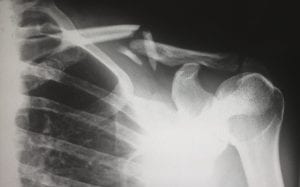While taking precautions is essential in preventing personal injury, you should know what to do if you are in such an unfortunate situation. You deserve justice! That said, how much do you know about personal injury laws in New York? Well, let’s delve deeper and look at some personal injury laws in New York that you should know.
Personal Injury Laws in New York
For starters, you should know that there are many types of personal injury cases in New York. Let’s look at some common ones:
- Slip & Fall
Slip and Fall is one of the common types of personal injury cases in New York that is a legal matter if there is negligence on the part of the property owner. But, you can only file a complaint of slip and fall against a property owner within three years of that happening. If found culpable, then the property owner will be required to compensate for the damage caused. He or she will have an opportunity to argue, and if blame is seen on your side, the amount will be reduced. New York is one of the states that uses what is known as pure comparative negligence rule where the compensation amount is reduced per the percentage of your fault.
- Medical Malpractice
A personal injury can also be caused by medical malpractice. You can file a lawsuit if an injury is caused by a breach of the standard of healthcare care within two and a half years. However, you are granted an exception if you have discovered a foreign object left in your body. For such a situation, you can file a claim within a year of discovering the object.
Car accidents are the most common causes of personal injury in New York. Now, it is important to know that New York is a no-fault car insurance state. The law stipulates that you turn to your car insurance company and seek compensation for the losses you incur in a car accident unless you have a very ‘serious injury’. According to the law, this includes injuries like bone fracture, limitation of organs, disfigurement, and full disability for 90 days, etc. You can speak to car accident attorneys who can help you get compensation from damages caused by an accident. There are different types of lawyers but it’s important that in this case, you work with one who has experience in seeking compensation for victims of car accidents like Uber/Lyft, motorcycle, bus accidents, etc.
- Injury Claims Against the Government
If a personal injury occurs due to the negligence of a government employee or agency, then the New York laws are more or less the same as the others. But, after filing the complaint against the particular agency, you are required to give them time to respond. Generally, you have 90 days to file a case against New York City, a county, or the state of New York and one year for the lawsuit.
- Police Brutality
The New York police brutality laws help victims who have experienced any sort of physical, emotional, and financial damages after police brutality. The police misconduct laws take into consideration the victims of verbal and physical attacks, sexual harassment, medical expenses, humiliation, mental suffering, discrimination, false arrest, unlawful search, and loss of future income-making opportunities, etc. Again, you will have to file a Notice of Claim document with the Controller’s Office within 90 days of your claim.
- Workplace Accidents
If you want to file a lawsuit in New York about workplace accidents then you should know that the state also has a no-fault rule when it comes to compensation for workplace accidents. In other words, you are entitled to workers’ compensation benefits regardless of whether your employer is at fault or not. The law covers physical injuries such as those caused by heavy lifting, exposure to chemicals, excessive noise, toxic substances, defective product, etc.
Final Thoughts
The personal injury cases we have covered are just a few common ones in New York but there are certainly more. There are variations in the law depending on the case. Thus, it’s essential to speak to an attorney who will assess your situation and plot the right way forward for your specific case.



Join the conversation!